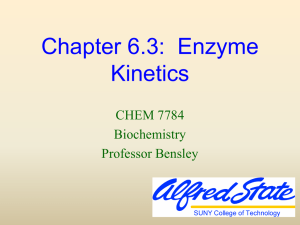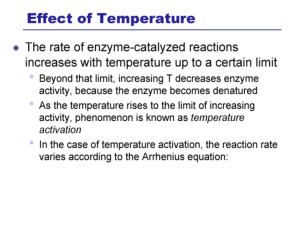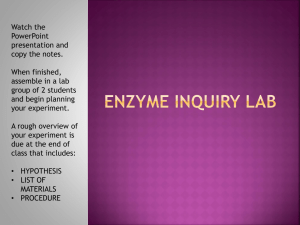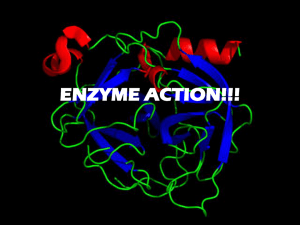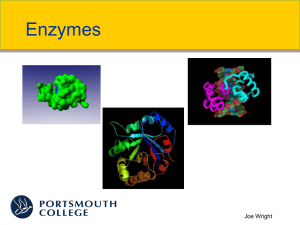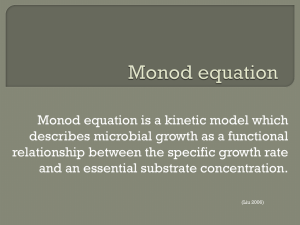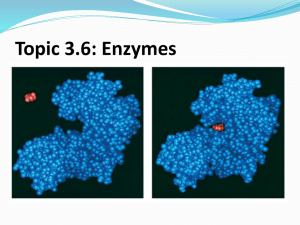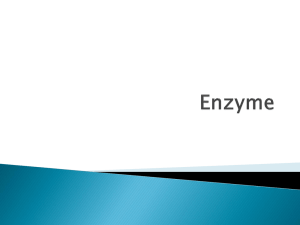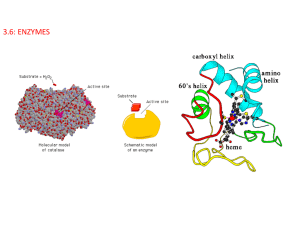Lesson 3.1 Introduction to Energy
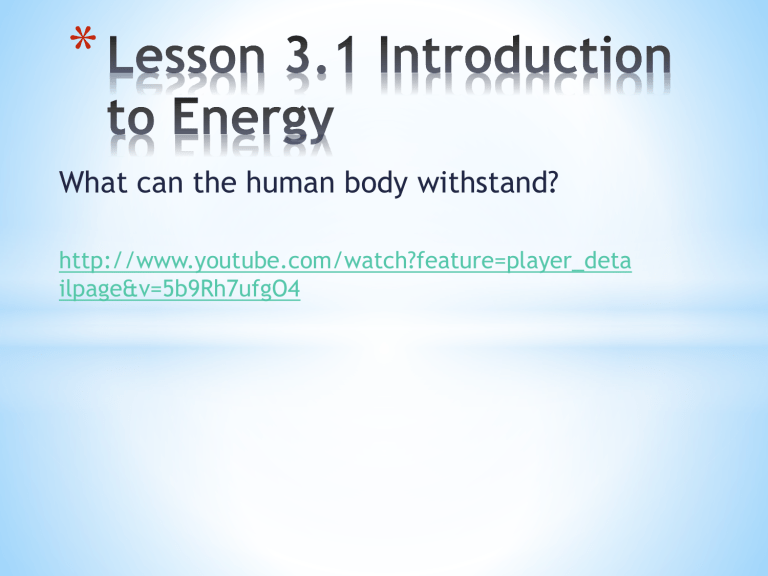
*
What can the human body withstand?
http://www.youtube.com/watch?feature=player_deta ilpage&v=5b9Rh7ufgO4
Mauro Prosperi
The Story of Mauro Prosperi, a 39 year old
Italian policeman took part in the 1994
Marathon des Sables (Marathon of the Sands) in Morocco.
A Major Sandstorm
Partway through the six day, 145 mile (233 km) event, a sandstorm caused him to lose his way.
He ended up disoriented, after which he ran and walked about three hundred kilometres in the wrong direction.
Mauro had a compass but no reference points and it took a while before he realized that he had strayed off the route.
"I wasn’t panicked, I just despaired. Fear, the type that doesn’t paralyze you is important. It forces you to think and concentrate".
"I stopped and turned my back to the wind, then covered my face with a special sandstorm scarf and glasses. I eventually found a log to block the wind, but I needed to keep moving a bit to keep from getting buried. The storm lasted eight hours, and when the winds died down, I didn’t know I was lost".
Shifting Into Survival Mode
Mauro shifted immediately into survival mode and the first thing he did was to urinate into a water bottle.
He knew that this first urination was going to be the clearest and most drinkable in the event that he didn’t come across a fresh water supply.
Mauro knew enough about desert survival to only walk in the morning and evening, and to relax in the shade during the midday heat.
After three days of wandering, taking sips of that initial urine, he was enveloped by another sandstorm that lasted for twelve hours.
Drinking Bat’s Blood
He found a small Muslim shrine, hung his Italian flag out front and crawled inside, where he finally found some nourishment.
He caught two small bats, twisted off their necks and drank their blood.
* Cooking first, and then eating the bats would have just accelerated the dehydration
.
And Then An Attempted Suicide!
"I reasoned that if I died in that shrine, by body would eventually be found. If I died while walking, my body would never be found. I wanted my family to be able to recover my body so they could come to terms with my death".
He wrote a note to his wife with a piece of charcoal and then slit his wrists and waited to die, but his blood had thickened and wouldn’t drain.
But Mauro took that as a sign!
Renewed Determination And Finding An Oasis
"It gave me more confidence. I started to view the desert as a place where people can live. I started to think of myself as a man of the desert. I wanted to see my family and friends again and I concentrated on that".
He decided again to try and walk his way to safety and headed for a mountain range in the distance.
Five days after leaving the shrine, and eight days drinking almost nothing but urine, he found a small oasis.
Mauro resisted the temptation to drink his fill of water which would have caused severe cramping, and instead took a reasonable, calculated amount.
Taken To Safety By Nomads
Two later days he encountered some Tuareg nomads, who took him on camel-back to a nearby Algerian military camp and from there to a hospital.
He was around 186 (300 km) miles off route, and reportedly had lost between 30 and 40 pounds (18 kg) in body weight.
*
1.Digestive system-no food/water
2.Integumentary system-Sweating, sun burn
3.Cardiovascular system-little bit of everything
4.Nervous system-Mirages
5.Respiratory system- Sand in lungs, heat
6.Endocrine system-
7. Urinary system-drink urine
8. Muscle System-
Essential Question
:
1. What are the resources the human body needs to survive?
Oxygen
Water
Food
*
• Pair up with a partner to complete your
Powering The Human Body Chart
Create This Chart in Your Lab Journal
Functions
Body Systems
Involved
Environmental
Factors
Personal/Human
Factors
POWERING THE HUMAN BODY
Resource #1 Resource #2 Resource #3
*
Essential Question
:
2. What role does food play in the human body?
Food serves as a source of energy for the body as well as a source of fat and insulation. This fat cushions organs and protects the human body.
*
Food includes macromolecules (Lipids,
Carbohydrates & Proteins), as well as vitamins
& minerals
Carbohydrates Quick energy source
Lipids Long term energy source, cushioning of organs,makes up much of brain
Proteins Build & repair body tissues
*
• Most doctors agree that healthy humans can go up to eight weeks without food as long as they have water.
• Being strong and in good physical shape can help you survive longer, but so does having extra body fat.
• Body stores energy needed to live in the form of fat, carbohydrates and proteins.
• Carbs are the first thing to be used up
• Fat goes next, which explains why people with more of it can survive longer.
• Then proteins. If you get to the point that your body is using up proteins, basically the body itself, then you're in bad shape.
* Essential Question:
* 3. What role does water play in the human body ?
* 1. Dissolves other materials & allows them to flow (in blood)
* 2. Gives cells structure (just right amount needed to prevent shrinking and exploding)
* 3. Allows food to digest & pass through intestinal walls into bloodstream
* 4. Carries waste products out of body
(in urine)
* 5. Helps send electrical messages
* 6. Regulates homeostasis of body temperature (evaporation/sweating)
* 7. Lubricates structures (i.e. allows fecal matter to pass through large intestine)
* 8. Protective barrier around organs
*
*
• In hot conditions with no water, dehydration can set in within an hour.
• A baby locked in a hot car or someone who is physically overexerted in the heat without replacing fluids can actually die in a period of several hours.
• We lose water through sweat, urine, feces and even breathing.
• This water needs to be replaced in order for our organs to continue to work properly.
• In severe heat, an adult can lose as much as 1.5 liters of water through sweat alone.
• The main risk without water in high heat is that your body temperature will continue to rise and you'll suffer from heat stroke.
• Drinking water will cool you down and lower your core temperature.
*
Essential Question:
4. What role does oxygen play in the human body?
Oxygen is required to feed the body’s tissues and produce ATP in aerobic cellular respiration. The physical act of breathing assists with gas exchange and the removal of harmful gases from the body.
*
Of all the chemical elements, oxygen is the most vital to the human body.
We would survive for only minutes without oxygen.
Oxygen is the life-giving, life-sustaining element. Approximately 90% of the body's energy is created by oxygen.
Nearly all of the body's activities, from brain function to elimination, are regulated by oxygen.
The ability to think, feel and act is derived from the energy supplied by oxygen.
*
Essential Question:
5. What human body systems work to create, process or distribute the body’s main power sources?
*
*
The Rule of Threes states that the human body can survive for:
3 minutes without oxygen
3 days without water
3 weeks without food
However... other factors can prolong or shorten these times.
Complete Activity 3.1.2 and fill in the rest of their chart
*
6 How do personal factors and environmental factors impact the body’s ability to survive without air, food or water?
*
•
With a group of 4 complete your graph
•
You have 20 minutes to complete
*
Factors that can prolong .
* Age
* children and
Mammalian Response
* Environment
* Temperature- colder is better
*
Altitude- lower is better
Factors that can shorten .
* Age
*
Lack of oxygen transfer as age increases due to environmental and lifestyle choices.
* Environment
*
Temperature- warmer is worse
*
Altitude- less oxygen at higher altitudes
*
Factors that can prolong.
* Activity Level
*
Lower activity level uses less water
* Environment
*
Temperature- colder is better
* Food intake
*
Some foods contain higher amounts of water
Factors that can shorten.
* Activity Level
*
Increased activity leads to higher level of cellular respiration resulting in increased water loss. as well as perspiration.
* Environment
* Temperature- warmer is worse = increased perspiration.
*
Age and Gender
*
Women have less water
*
Children have a greater surface area to volume ratio.
*
Factors that can prolong .
* Initial body state
* people with a higher BMI have more stored energy
* Metabolic rate
* Adults lower
*
Women lower
*
Differences among individuals
* Environment
* Temperature-Average temperatures better.
Factors that can shorten.
* Initial body state
* people with a lower BMI have less stored energy
* Metabolic rate
*
Children higher
*
Men higher
* Differences among individuals
*
Environment
*
Extremes are worse.
*
*
How can a person prepare their bodies for a fuel (food) shortage?
*
*
Carbohydrates
*
Fats
*
Protein
*
Nucleic Acids
*
Homeostasis The maintenance of relatively stable internal physiological conditions (as body
Macromolecule temperature or the pH of blood) in higher animals under fluctuating environmental conditions.
A very large molecule (as of a protein, nucleic acid, or carbohydrate) built up from smaller chemical structures.
Resource A natural feature or phenomenon that enhances the quality of human life.
*
What helps food
/Macromolecules
Digested?
•
Enzymes which act as a catalyst
*
What is a catalyst?
•
Catalysts help a reaction happen faster but do not change themselves during the reaction.
•
A catalyst lowers the amount of energy needed so that a reaction can happen more easily. A catalyst is all about energy.
*
1.
Add 10 mL of hydrogen peroxide to a graduated cylinder. Add 1 drop of detergent solution. Swirl gently and watch the solution for any bubbling.
2.
Use the end of a popsicle stick to add a small amount of yeast to the hydrogen peroxide in the graduated cylinder and swirl.
3.
Place the graduated cylinder on the table and watch for any bubbling.
4.
Hold the graduated cylinder to see if there seems to be any change in temperature.
*
•
Pair up with a partner
•
Complete parts A,B and C
•
Share with class your creations
*
*
Structurally- enzymes are proteins and have a complex, 3-dimensional shape
* Functionally- they act as biological catalysts; there are different models concerning function (Lock & Key Model and
Induced Fit Model)
*
Action- enzymes work by lowering the activation energy of chemical reactions; they are very specific, with each enzyme working on a particular substance, the substrate
*
Coenzyme: A substance that enhances the action of an enzyme.
Coenzymes are small molecules. They cannot by themselves catalyze a reaction but they can help enzymes to do so.
Coenzymes are organic nonprotein molecules that bind with the protein molecule
(apoenzyme) to form the active enzyme
(holoenzyme).
*
1)
Lock-and-Key Model A model for enzyme-substrate interaction suggesting that the enzyme and the substrate possess specific complementary geometric shapes that fit exactly into one another.
Like a key into a lock, only the correct size and shape of the substrate (the key) would fit into the active site (the key hole) of the enzyme (the lock).
2)
Induced-fit modelA model for enzyme-substrate interaction to describe that only the proper substrate is capable of inducing the proper alignment of the active site that will enable the enzyme to perform its catalytic function. It suggests that the active site continues to change until the substrate is completely bound to it, at which point the final shape and charge is determined.
*
• Catalysts
• Enzymes
• Coenzymes


